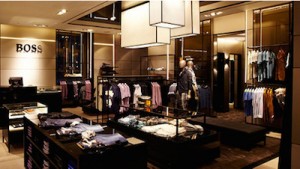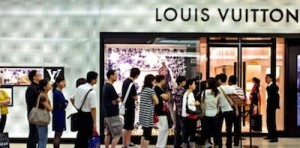NEW YORK – The growth formula that luxury brands have relied on in recent years is already failing, according to an executive from Exane BNP Paribas at the FACC Luxury Symposium 2016.
Recently, the luxury sector has been reliant on growth in China and among Chinese consumers and has responded by increasing prices and opening more stores. However, a number of deflationary forces are already hampering in this route, and luxury must now find a way to generate growth.
“It’s not that the formula is not going work in the next two years,” said Luca Solca, managing director, global luxury goods at Exane BNP Paribas. “The formula we looked at hasn’t worked for the last two to three years. The change of ROIC in 2012 and 2014 is -5 percent.”
FACC Luxury Symposium was organized by French-American Chamber of Commerce.
Subhed1
Although increasing prices has long been a strategy for increasing revenue, as a large percentage of valuable clients have both the loyalty and means to ignore incremental price increases, the strategy is no longer working. Mr. Solca showed that a large sampling of brands has expanded the gross margin by five percentage points over the past five years.
Hugo Boss New York Fifth Ave store
A number of significant opposing forces, however, set this strategy up for failure. The growth luxury relies on is from China’s middle, not upper class. These consumers have shallower pockets and are far more concerned about prices than the richer, early adopters.
The Internet also allows these consumers to have more access to pricing information than in the past. This information has led many to plan trips outside the mainland around the prices of luxury goods.
Meanwhile, authorities are attempting to reduce the amount of money being spent in other countries and increase tax revenue. This pressures luxury brands to reduce prices in China, but this will consequently reduce the consumer class’ spending abroad.
Chinese tourists outside a Louis Vuitton boutique
Lastly, many accessible luxury brands are building inroads with the Chinese consumer by offering products at entry-level price points. As a result, other brands do not have the option of reducing the price gap with China by increasing prices in core markets.
On the retail side, growth initially looks deceptive. Between 2013 and 2015, the number of retail stores by the brands Mr. Solca examines grew 4 percent. However, Tory Burch and Michael Kors alone are responsible for three-quarters of that growth.
From 2012 to 2014, there has been a drop in ROIC, a metric that is very highly correlated with the price of shares.
Over its history, luxury has grown in waves, with the most recent wave being the influx of Chinese consumers. From 2005 to 2015, the luxury market grew by 6 percent, with Chinese consumers accounting for two-thirds of the growth. With China slowing, brands must find new ways to grow.
Among the ways in which brands can do this, it begins with the basics. Brands must boost their desirability. Without a major growth driver, doing better than competitors is very important as brands fight for smaller margins with lower-spending consumers.
Closely related, tighter capital allocation and cost efficiency will aid growth. With revenue sources drying off, cutting costs offers another place to increase revenue. Brands must also prioritize digital channels and travel retail, as people on the move buy at least half of luxury goods.
In the digital retail space, Exane BNP Paribas found that in 2013 the average cross-channel consumer spent 40 percent more than the in-store-only consumer and that in 2014 the number increased to 60 percent. These figures show that consumers are not merely translating their purchases from in-store to online; instead, consumers comfortable in both spaces are buying more than they would otherwise.
Executives remain optimistic despite the current pause. Around half of those in the room expect their brand to grow by a modest 3-5 percent in 2016 and 2017, but an additional 20 percent forecast growth of 6-10 percent and a small portion expect even more.
The optimism suggests that brands are already tapping into potential omnichannel growth. However, Exane found that performance in omnichannel servicing is generally lacking.
While the majority of executives in the room said that being able to return or pick-up an online purchase in-store is important, Exane found that many brands do not offer that option.
Cartier Chinese ecommerce site
“The Holy Grail for luxury brands is to integrate physical and digital operations,” Mr. Solca said. “That’s where the value will come from.”
With integrated operations, digital can serve as a traffic feeder to store and increase traffic conversion, as those coming for in-store pickup are upsold by an effective sales staff. Stores will also be able to leverage cross-selling opportunities and increase the convenience of online purchases.
Subhed2
While 85 percent of retailers consider unified commerce a top priority, most are not making enough of an effort in upgrading their infrastructure to achieve a fully seamless shopping experience.
According to a recent report from Boston Retail Partners, retailers have attempted to reformat their outdated systems to accommodate cross-channel capabilities, leaving many with “faux omnichannel.” As the consumer comes to expect a uniform service across channels, retailers are at risk of losing clientele if they do not implement a more holistic system (see story).
Brands must also ensure they pay close attention to consumer confidence patterns and the economic developments of Asia as a whole and China in particular. Even if China will not be the primary driver of growth to the same extent they have in the past 10 years, the market is still large and growing.
Consumer confidence in Mainland China is showing signs of growth, while Hong Kong consumers are expected to be more conservative in their luxury spending, according to a new report by Ruder Finn and the Consumer Search Group.
Forty-two percent of Mainland consumers expect to raise their luxury spending in 2016, but just 25 percent of Hong Kong residents say the same, whereas 30 percent said they would be spending more in 2015. However, while Hong Kong consumers may be curbing their spending, they are still interested in exploring new luxury brands and services, and the luxury industry should not discount the city (see story).
“I think the Chinese, at the end of the day, if all goes by plan, will be about average,” Mr. Solca said. “I expect the Europeans to continue to lag and Americans to be broadly along the average.”
from
http://www.luxurydaily.com/cross-channel-retail-offers-solution-to-luxurys-failing-model/




No comments:
Post a Comment